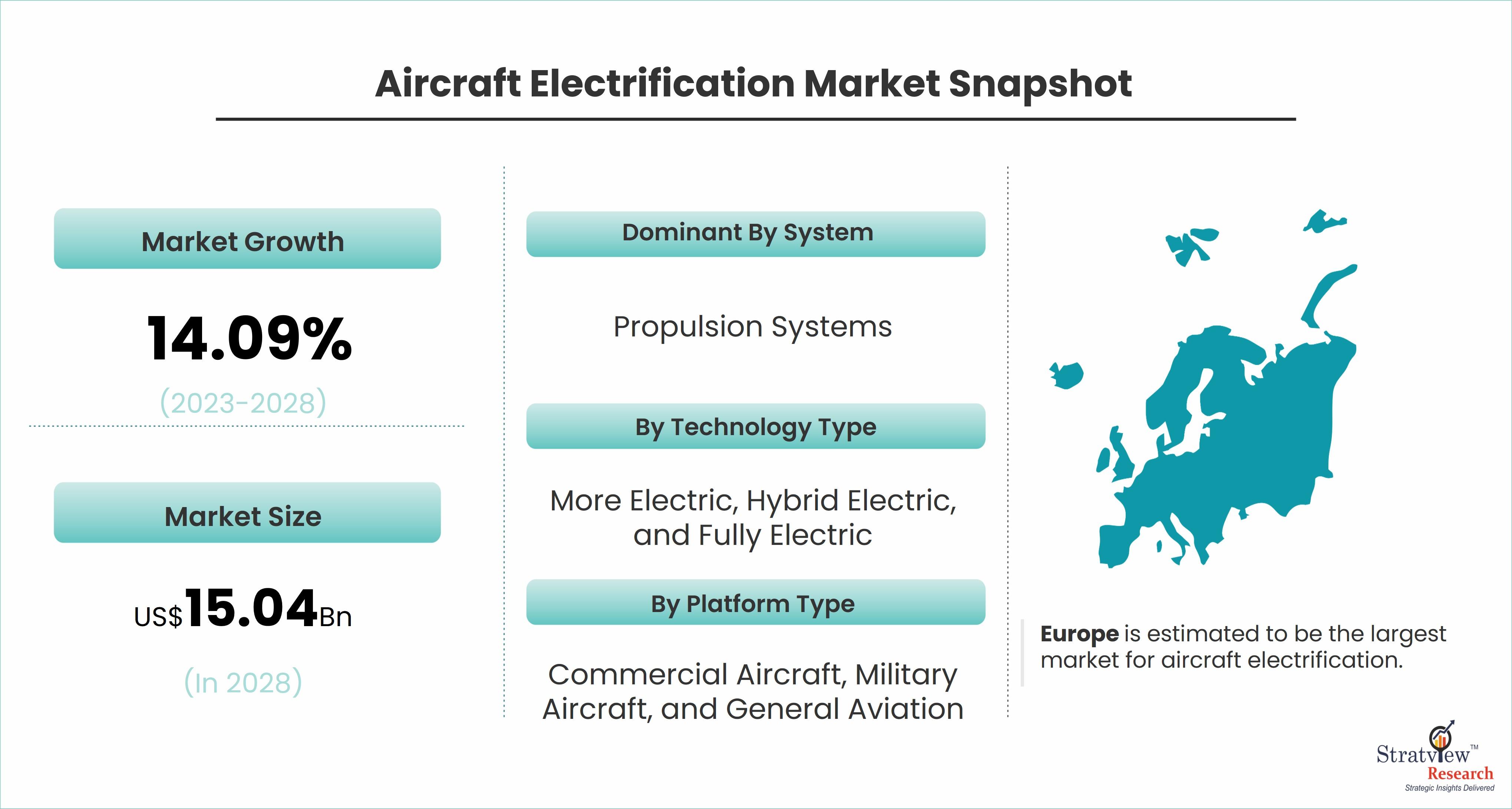Electrifying Flight: The Rise of the Aircraft Electrification Market

According to Stratview Research, the aircraft electrification market was estimated at USD 6.8 billion in 2022 and is likely to grow at a CAGR of 14.09% during 2023-2028 to reach USD 15.04 billion in 2028.
In a world where sustainability is paramount, the aviation industry is undergoing a remarkable transformation. At the forefront of this revolution is the electrification of aircraft—an innovative approach that promises to reshape the future of flight. As concerns about climate change and environmental impact continue to grow, the aircraft electrification market is experiencing a surge in interest and investment, driven by the urgent need for cleaner, more sustainable aviation solutions.
The Promise of Electrification
The concept of electrifying flight involves replacing traditional combustion engines with electric propulsion systems powered by batteries or fuel cells. This shift away from fossil fuels holds the potential to significantly reduce carbon emissions, noise pollution, and operating costs, while also enhancing aircraft performance and efficiency.
One of the key advantages of electric propulsion is its environmental sustainability. Electric aircraft produce zero emissions during flight, helping to mitigate the aviation industry's contribution to greenhouse gas emissions and air pollution. By transitioning to electric power, airlines can reduce their carbon footprint and contribute to global efforts to combat climate change.
Moreover, electric propulsion offers the potential for quieter, more community-friendly flight operations. Electric aircraft generate less noise than conventional aircraft, making them ideal for operations in densely populated urban areas or near sensitive wildlife habitats. This reduction in noise pollution not only benefits local communities but also opens up new opportunities for urban air mobility and airport expansion.
Driving Forces Behind Market Growth
Several factors are driving the rapid growth of the aircraft electrification market. Advances in battery technology, electric motors, and power electronics have made electric propulsion systems more efficient, reliable, and cost-effective than ever before. Lithium-ion batteries, in particular, have seen significant improvements in energy density and lifespan, enabling longer flight ranges and faster charging times.
In addition to technological advancements, increasing regulatory pressure and public demand for sustainable aviation solutions are driving airlines and aircraft manufacturers to invest in electrification initiatives. Governments around the world are implementing policies to incentivize the development and adoption of electric aircraft, such as tax credits, grants, and emissions regulations.
Furthermore, the rise of electric air taxis, urban air mobility vehicles, and unmanned aerial vehicles (UAVs) is creating new market opportunities for electric propulsion technology. These emerging sectors are driving innovation and investment in electric aircraft platforms, infrastructure, and support services, paving the way for a new era of electric aviation.
Collaboration and Innovation in the Electrification Market
The aircraft electrification market is characterized by collaboration and innovation, with stakeholders across the industry working together to drive progress and overcome technical challenges. Aircraft manufacturers, battery suppliers, research institutions, and government agencies are collaborating on research and development projects to advance electric propulsion technology.
Major aerospace companies are investing heavily in the development of electric and hybrid-electric aircraft for various applications, including regional commuter flights, cargo transport, and urban air mobility. These initiatives are supported by partnerships with battery manufacturers, electric motor suppliers, and infrastructure providers to create a comprehensive ecosystem for electric aviation.
Looking Ahead
As the aircraft electrification market continues to mature, the future of flight looks increasingly electrifying. Electric aircraft promise to revolutionize air travel, offering cleaner, quieter, and more sustainable transportation solutions for passengers and cargo alike. With ongoing advancements in technology, policy support, and market demand, electrification is set to play a pivotal role in shaping the future of aviation, paving the way for a greener and more sustainable industry.
- Questions and Answers
- Opinion
- Motivational and Inspiring Story
- Technology
- Live and Let live
- Focus
- Geopolitics
- Military-Arms/Equipment
- Ασφάλεια
- Economy
- Beasts of Nations
- Machine Tools-The “Mother Industry”
- Art
- Causes
- Crafts
- Dance
- Drinks
- Film/Movie
- Fitness
- Food
- Παιχνίδια
- Gardening
- Health
- Κεντρική Σελίδα
- Literature
- Music
- Networking
- άλλο
- Party
- Religion
- Shopping
- Sports
- Theater
- Health and Wellness
- News
- Culture

